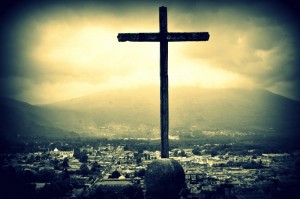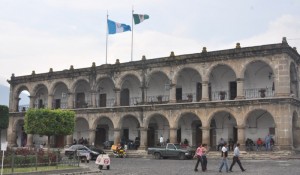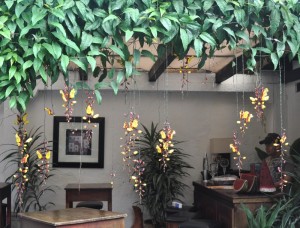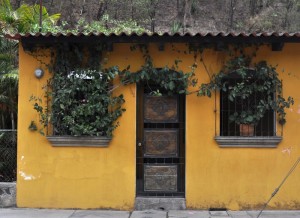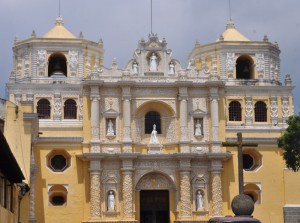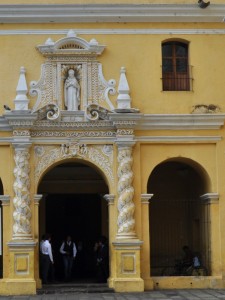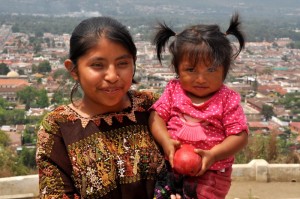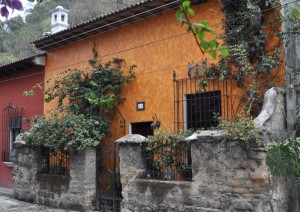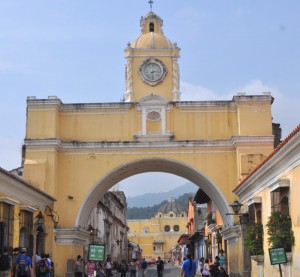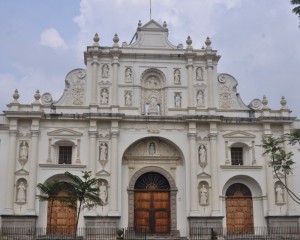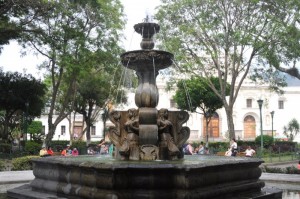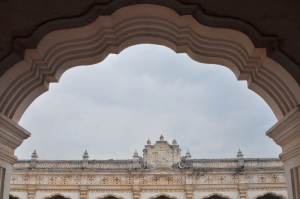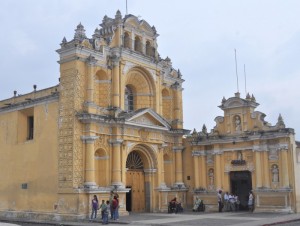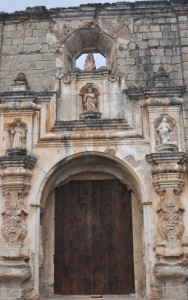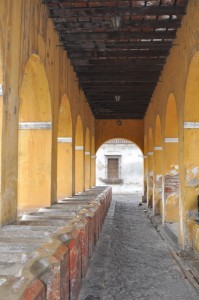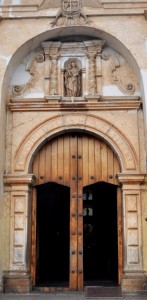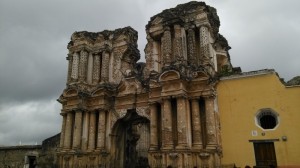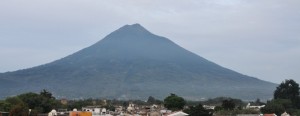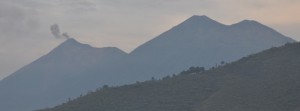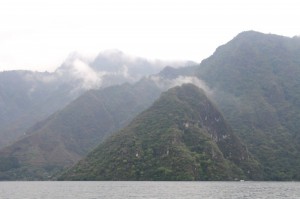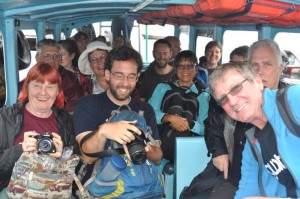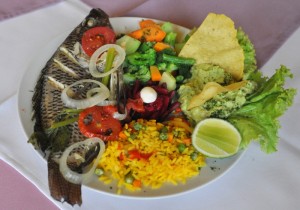Guatemala with its rich history and abundant biologically significant and unique ecosystems has been on my wish-list for two decades. My plan to visit Guatemala and Copan, Honduras in 10 days fell through a decade ago. Being a lady of leisure without a job, I am able to spend more time to discover the country.The Maya
Guatemala has a long history before arrival of the Spaniards in the late 15th century. The first evidence of human settlers dates back to 12,000 BC. The Mesoamerica civilization was divided into the Pre-classical period (2999 – 250 BC), the Classical period (250 BC – 900 AD) and Post-classical period (900 – 1500 AD). The Classical period corresponds to the height of the Maya civilisation which is characterised by heavy city-building as evidenced in Petén, the development of independent states and contacts with other Mesoamerican cultures. The Classic Maya civilization collapsed possibly as a result of drought-induced famine with many of the Maya cities in the central lowlands being abandoned.
The Maya civilisation shares many features with other Mesoamerican civilisations owing to a high degree of interaction and cultural diffusion that characterised the region. Advances such as writing, epigraphy and the calendar did not originate with the Maya; but the Maya fully developed them. Maya culture had spread to the present day Honduras, northern El Salvador and central Mexico. Many outside influences are also found in Maya art.
Brief history
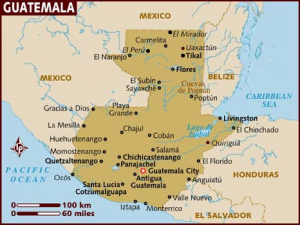 Guatemala became an Audjencia and a Captaincy General of Spain, a part of New Spain from 1519 to 1821. The first capital named Tecpan, was founded in July 1524. It was moved to Ciudad Vieja in November 1527 and to Antiqua in 1541 when the former was flooded. The capital was moved for the fourth time to Guatemala City in January 1776 when Antiqua was destroyed by several earthquakes in 1773-74.
Guatemala became an Audjencia and a Captaincy General of Spain, a part of New Spain from 1519 to 1821. The first capital named Tecpan, was founded in July 1524. It was moved to Ciudad Vieja in November 1527 and to Antiqua in 1541 when the former was flooded. The capital was moved for the fourth time to Guatemala City in January 1776 when Antiqua was destroyed by several earthquakes in 1773-74.
On September 15, 1821, the Captaincy-general of Guatemala (formed by Chiapas, Guatemala, El Salvador, Nicaragua, Costa Rica, and Honduras) officially proclaimed its independence from Spain. In 1823, Guatemala declared independence from the Federation of Central America.
Since independence, Guatemala has gone through a prolonged period of political instability and chaos. Rafael Carrera which was instrumental in breaking up the Federation dominated Guatemalan politics until 1865 with the backing of conservatives, large land owners and the church. The country’s “Liberal Revolution” under the leadership of Justo Rufino Barrios came in 1871. He took the country to war with El Salvador and died in the battlefield in 1885.
Guatemala has a traumatic history under the rule of dictators and military juntas and has been tormented by an atrocious 36 year-long civil war. Manuel Estrada Cabrera, a dictator who ruled from 1989 to 1920 was helped by the United Fruit Company from the US. Then came Jorge Ubico Castañeda (1931-1944), Juan Jose Arevalo (1945-51) and Colonel Jacobo Arbenz Guzmán (1951-4) who was overthrown by a coup orchestrated by the US. From 1960 to 1996, a civil war fought between the government and leftist rebels resulted in over 200,000 casualties and displacement of over a million people mostly of Mayan origin.
The country has gradually recovered following the war. Successful democratic elections have been held bringing some degree of normality, stability and economic growth. But it is still far from being a just and democratic society and faces major problems that include poverty, illiteracy, lack of education and health care, corruption, violence, crime, distrust in government institutions and government’s regard for human rights.
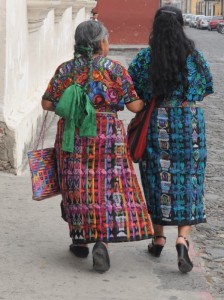 |
 |
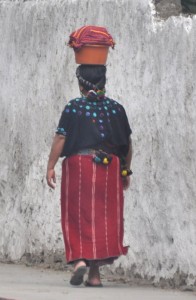 |
Guatemala is Central America’s most populous country with a population of 15.44 million (2013 est) and an area of 108,889 km². The estimated GDP (PPP) and GDP-per capita (PPP) for 2012 is $78.681 billion and $3,302 respectively. About 59.4% of its population is Mestizo; other major indigenous groups include K’iche (9.1%), Mayan (8.6%) and Kaqchikel (8.4%). It has three World Heritage Sites namely Antiqua, Tikal National Park and the archaeological park and ruins of Qirigua.
May 9 Friday: Los Cobanos El Salvador – Antigua Guatemala (200km; 4hrs) border crossing
Antiqua, founded in 1543 and a colonial capital for 233 years, is a must for visitors in Guatemala. Three volcanos: Agua (3766m), Fuego (3763m) and Acatenango (3976m) provide a majestic backdrop for the city. Most of the ecclesiastical and civic structures were constructed during the 17th and 18th centuries.
The drive from the El Salvador border to Antigua is smooth. By noon, we arrived at Posada La Merced. I suddenly felt pains spreading through my abdomen. In view of the kidney infection, I was anxious and asked Yves to find me a clinic.
I arrived at the clinic at 1:30pm. The receptionist told me to pay for the consultation in cash (the exchange rate: 1 US$ = 7.5 Quetzal). I had to walk to the Parque Central to find ATMs. I took this opportunity to have a quick tour of the Catedral de San José which door was open. (I was glad I had done so as it was closed the following day)
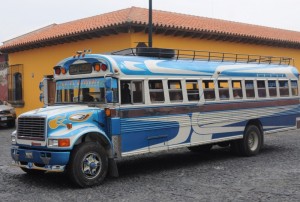 |
|
At 3pm, I saw a doctor who speaks English. I explained to him what had happened since May 3 in Copán, the kidney infection and the pain which lasted for over an hour. After taking my temperature and blood pressure, both of which were normal, he suggested me take a blood and urine test the following day. I left the clinic at 4pm and the whole day had gone.
Next to the clinic is the Iglesia La Merced which Baroque architecture with lace-like exterior in yellow and white is exquisite and magnificent. A mass was going on. It gave me an opportunity to sit down after a stressful day to watch the ceremony and soak in the atmosphere.
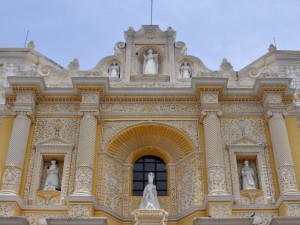 |
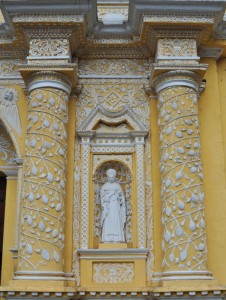 |
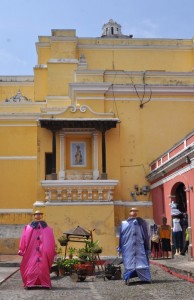 |
I shared a room with AJ, Emma and Victoria. The room is small and unsatisfactory: the toilet is tiny without ventilation. I joined a group dinner to farewell AJ, Nam, Amy, Lochi and Tim. But Amy and Lochi were sick and could not come. We were seated into four small tables and there was no ‘group’ feel at all. Anyway, I had a good meal with a drink and two large pieces of pan-fried grouper fillets, rice and cooked vegetables for Q120.
May 10 Saturday: Antigua
At 7:30am, I returned to the clinic with an empty stomach. After the blood and urine tests, I was told to return after 11am to see the results. I visited the Saturday market which sprawls around the bus terminal. It’s the mango season: one can get 3 big ones for Q10 or 3 small one for Q5 for 3. I also got 3 small papayas and apples for Q10 and Q5 respectively.
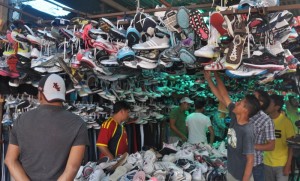 |
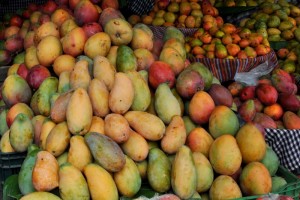 |
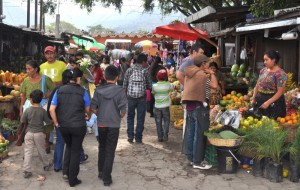 |
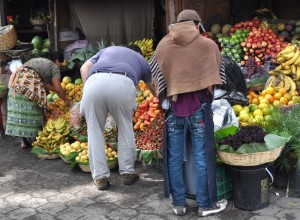 |
On my way out, I met and spoke with two Chinese ladies whose husband is working in Guatemala City. Both are learning Spanish and staying in a hostel run by a local family. I joined them on a visit to the Cerro de la Cruz. We first took a tuk-tuk for Q20 to the bottom of a hill and reached the lookout point after 10 minutes’ walk. It was a cloudy day and I did not have the best view of Volcán Agua and the city.
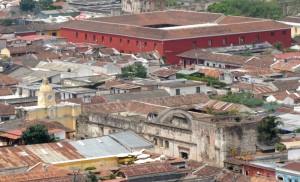 |
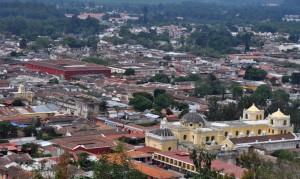 |
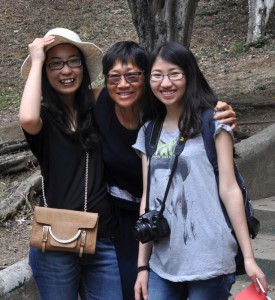 |
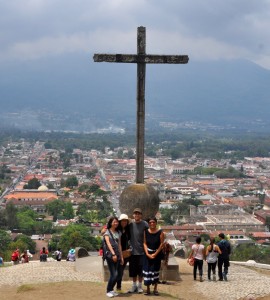 |
We walked back to town so that I could go back to the clinic. At 11:30am, there were half a dozen people at the waiting room. The receptionist suggested me return around 12:45pm. I therefore visited the nearby Monastery of La Merced (Q20).
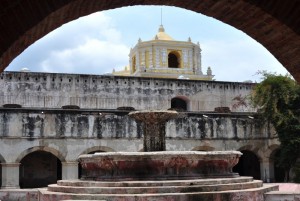 |
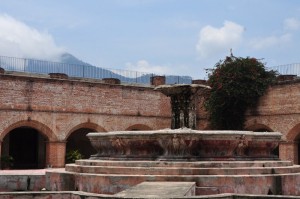 |
Finally I saw the son of the doctor whom I met the day before. The lab results confirm that I have no Dengue fever and no kidney infection. He asked me to repeat the history of my problem and took my temperature. Then he charged me another Q200 for consultation and Q250 for lab tests. I am annoyed: I am prepared to pay Q250 for the lab tests but not Q200 for a consultation which serves no purpose at all. Also he had wasted my precious time.
By the time I left the clinic, it was already 1:15pm. I spent the next three hours exploring the town on foot. I began my walk at the iconic arch of Santa Catalina which is the only remaining part of the convent founded in 1609. I returned to the Parque Central to take a closer look at the colonial architectures of the Palacio de los Capitanes Generales (1558) and the Ayuntamiento (City Hall) (1740). The former is closed for renovation while the latter houses the Museo de Santiago and Museo del Libro Antiquo. I was in no mood for museums. I passed by the Museo de Arte Colonial with ornate Moorish-style arcades and a beautiful courtyard.
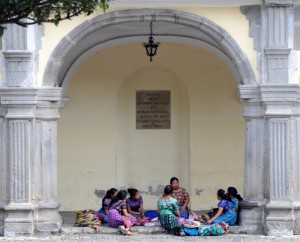 |
I visited the Iglesia San Pedro (1680) and passed by the Hospital San Pedro, Parque Union, a pila (washhouse) and former Convent of El Carmen.
Then I reached the Church of San Francisco (1579), one of the oldest churches in the city. During the colonial time, it served as a religious and cultural centre that included a school, a hospital, music rooms, a printing press and a monastery. But most of the complex was destroyed by an earthquake in 1773. Today, the ruins of the monastery are still impressive. The church was crowded as a mass was going on. Before leaving the church, I went to the tomb of Hermano Pedro de Betancourt which is a pilgrimage site. The Franciscan from the Canary Islands who founded the Hospital of Belén in Antiqua, was made the first saint of Central American in 2002.
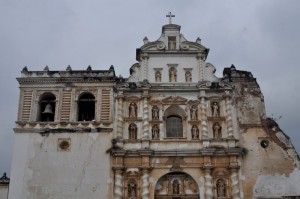 |
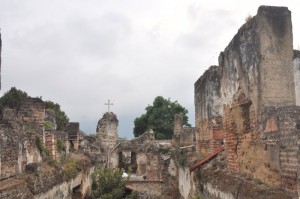 |
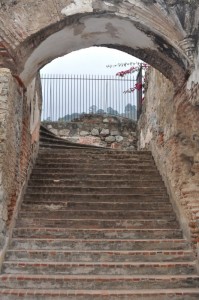 |
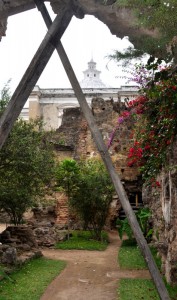 |
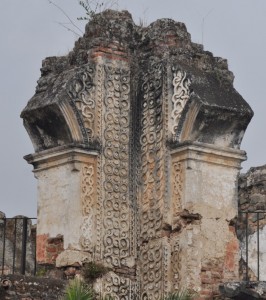 |
Suddenly, dark rain clouds gathered over the sky. I was cold and hungry as I had not eaten. I had an early dinner in a local restaurant for Q30. On my way back to the hotel, I saw the awesome ruins of Santa Clara Convent. I spent the evening quietly in the hotel working on my travel notes.
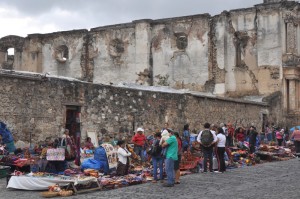 |
May 11 Sunday: Antigua – Chichicastenango – Panajachel (130km; 4hrs)
AJ departed for the airport shortly after 4am. I got up to say good-bye. She who a happy-go-lucky girl with a sweet big smile, will be greatly missed. The sky was clear: I could finally see the three volcanoes!
Nam and Lochi saw us off at 6am. As Bessy had a problem, Yves arranged a minibus to take us to Panajachel. We had breakfast on the way to Chichicastenango which is known best for its twice-weekly (i.e. on Sunday and Thursday) markets. As my battery was flat, I could not take pictures with my Nikon. What a pity!
We arrived at 9:15am and were taken by a local guide to see the white-washed Iglesia de Santo Tomás (1540) which is a local religious centre. There were dozens of flower vendors selling flowers on the steps. Locals were burning incense in perforated cans. Sunday Mass was in progress and the church was packed and atmospheric.
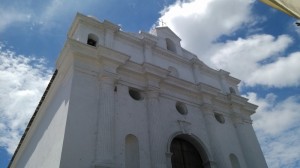 |
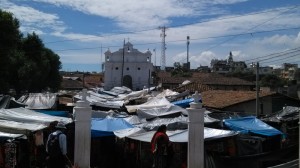 |
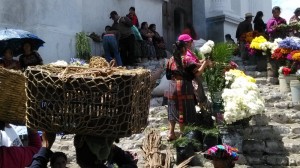 |
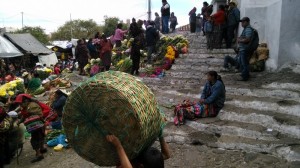 |
The interior of the church is impressive: dark wood columns and white and burgundy drapes. In the middle of the aisle there are five sets of stones (2 in each set). We watched the service and listened to the cheerful choral singing accompanied by guitar and local instruments. I stayed on to watch a group of a group of six Maya men all dressed in traditional costumes kneeling behind three sets of the stones before leaving the church. A priest was blessing moms and their children near the main door of the church. A few indigenous people lighted candles on the stones in honour of their ancestors. I wish someone could explain to me about the Maya faith which blends pre-Columbian and Catholic rituals.
I went to the small church opposite Iglesia de Santo Tomás which affords a good view of the main church and the market. I spent some time wandering through the central market which has hundreds of stalls selling textiles and souvenirs. Maya weavers are famous for their skills and the patterns and colours are exquisite. A lady wearing a beautiful blouse told me that she had taken a few months to make it and had some 15 blouses of different designs in her wardrobe! I am most impressed by the exquisite stitch work, colours and patterns.
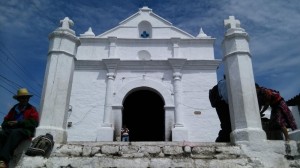 |
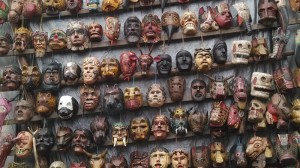 |
I am not a shopper and my suitcase has no room for souvenirs. I went to Hotel de Santo Tomás and had an orange juice in its lovely courtyard. At 11:30am, we departed for Panajachel by Lago de Atitlán. I had a simple but delicious vegetable soup for Q20 in a local eatery. We stayed in Posada Los Volcanos on the main street. Victoria and I had a nice room on the ground floor.
Lago de Atitlán has been described by Aldous Huxley in 1934 as one of the most beautiful lakes in the world. I had a walk along the lakeshore. As it was cloudy, I could not see Volcán Tolimán (3158m), Volcán Atitlán (3537m) and Volcán San Pedro (3020m) at all. The only event worth mentioning is a Mother’s Day parade at 6pm. I watched the 24 moms wearing masks and strange costumes dancing for 15 minutes in front of the hotel. Their make-up and costumes are most weird!
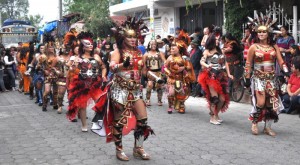 |
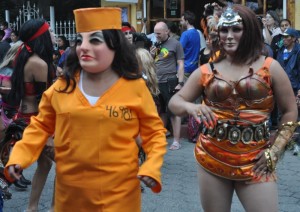 |
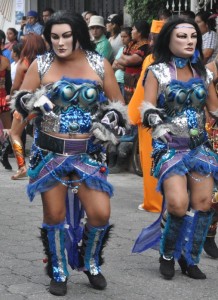 |
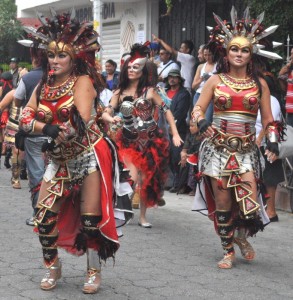 |
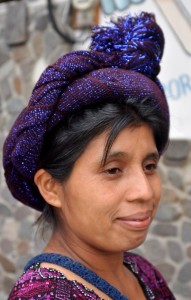 |
We had dinner at 6:30pm at an Italian restaurant. I paid some Q100 for a small and lukewarm lasagna and a cup of tea. Poor value for money! Whenever possible, I prefer to cook or have street food.
May 12 Monday: Sightseeing
Most of us joined a boat trip for $20 to visit four islands. The weather was disappointing: it was rainy, cloudy and miserable. There was no post card view of the lake with the three volcanos!
San Marcos La Laguna– I like the place on first sight: it is peaceful, tranquil and lush green without ugly hotels/hostels and bars. After the trip I read from a guide book which says this place “is the most bohemian place on the lake, and is home to legions of foreigners of an artistic and spiritual persuasion”. I wish I were staying here instead of Panajachel. After leaving the main street, I passed by a church before arriving at a large stadium with two school teams playing football with many moms watching.
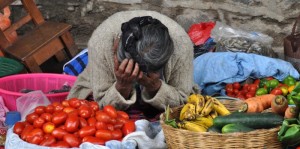 |
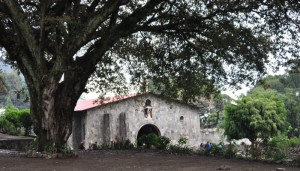 |
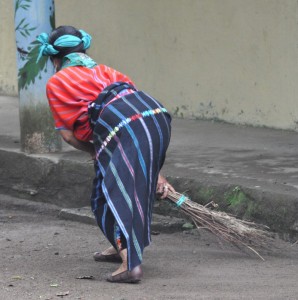 |
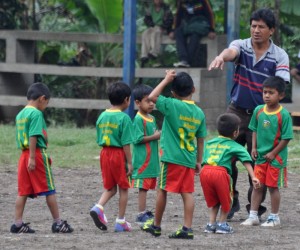 |
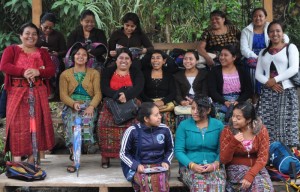 |
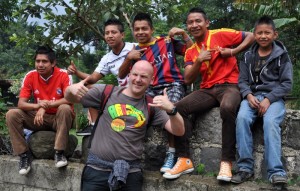 |
San Juan La Laguna– This village specialises in the weaving of petates, lake-reed mats and there are several co-ops selling weaving shawls, bags and clothes. I watched a lady weaving for a while before visiting a couple of studios. After leaving the main street, I arrived at a fairly large church under construction next to a secondary school. I find this village appealing and lively.
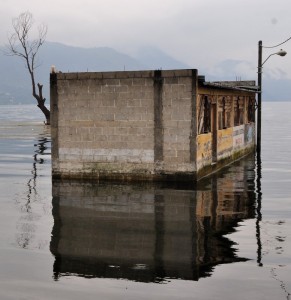 |
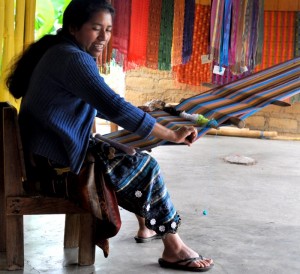 |
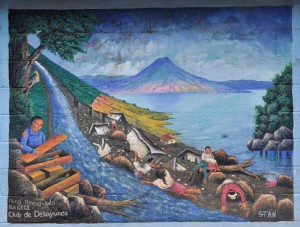 |
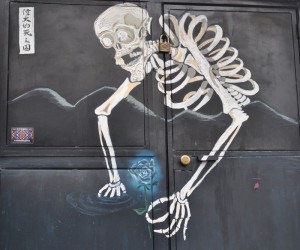 |
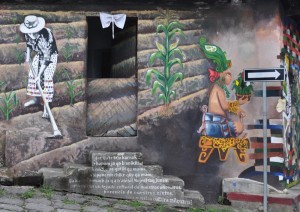 |
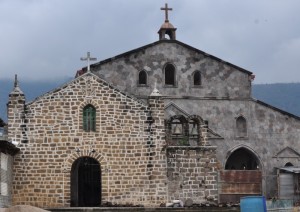 |
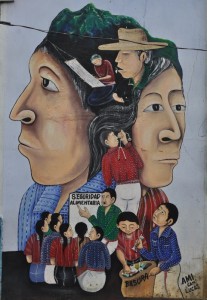 |
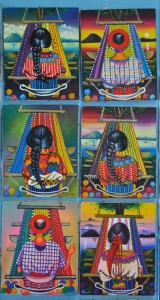 |
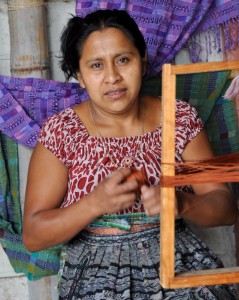 |
San Pedro La Laguna– It looks like a backpackers’ ghetto. My guide book says “it’s the party destination on the lake” with “a pretty serious drug culture”. This is definitely not the place for me! I saw a strange looking white building which is a new church. Locals told me to go up to the top for the view. I made my way to the top and saw nothing impressive owing to the poor weather.
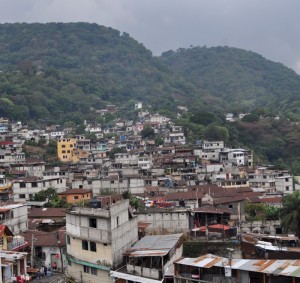 |
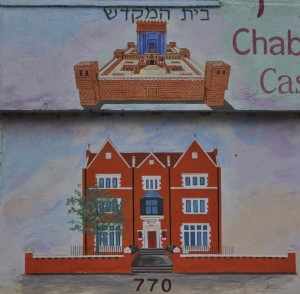 |
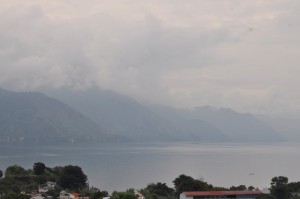 |
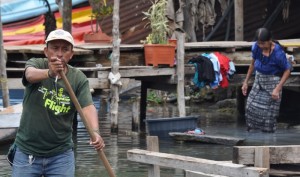 |
Santiago Atitlán– This is the largest of the lakeside villages and is said to be one of the last bastions of traditional life here. It’s time for lunch: Yves and I had a whole steam fish for Q85. Ulli had a fried fish for the same price. I am satisfied: the fish is delicious and fresh. After lunch, we wandered around the market place and the main square with a large parish church.
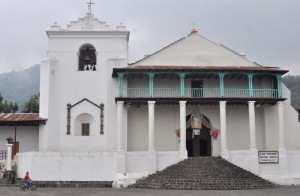 |
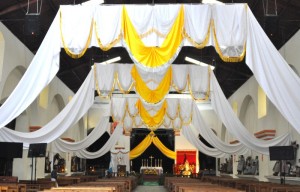 |
We left at 2pm and were back in Panajachel before 3pm. I decided to take a local bus to visit Sololá which is said to be the largest Maya town in Guatemala with a Friday market which is one of Central America’s finest. It also affords fantastic views of the lake on a clear day. Unfortunately, I had a disappointing visit: there was no market and the lake view was poor. The only nice thing was the ride in a crowded “chicken bus” with the locals (Q3 each way).
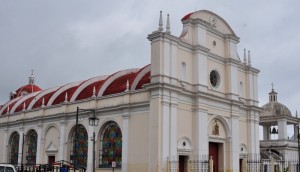 |
I did not go out for dinner as I already had a good lunch. Ulli and I had a bottle of red wine with cheese and peanuts. We had a relaxing evening chatting and enjoying our wine.


